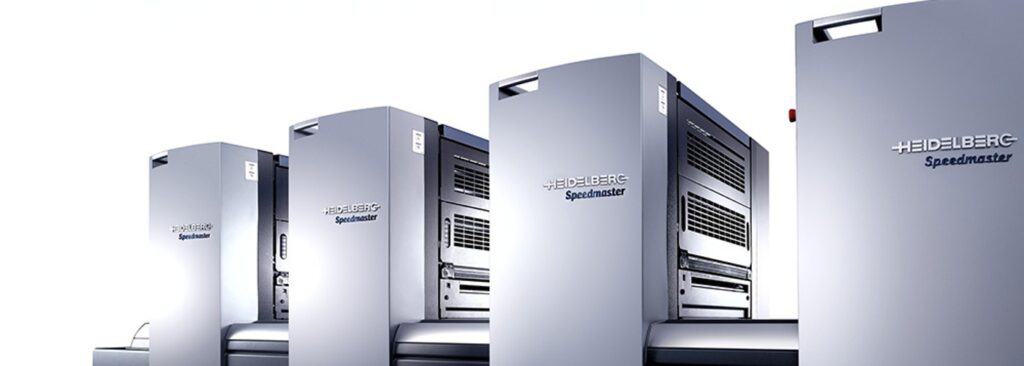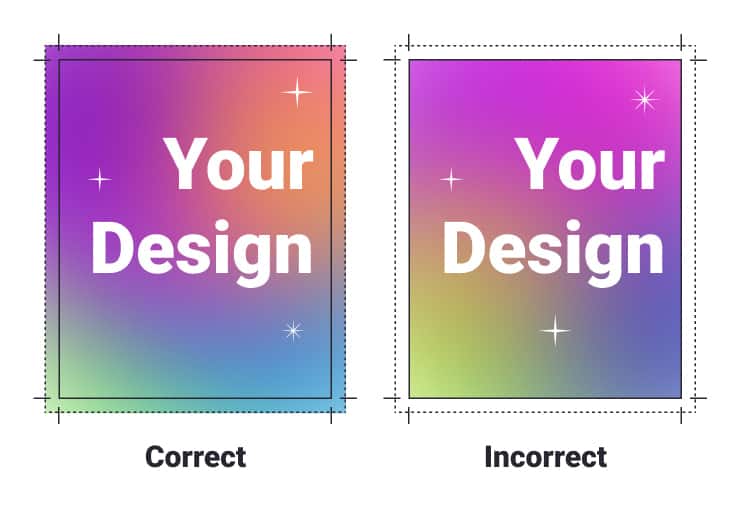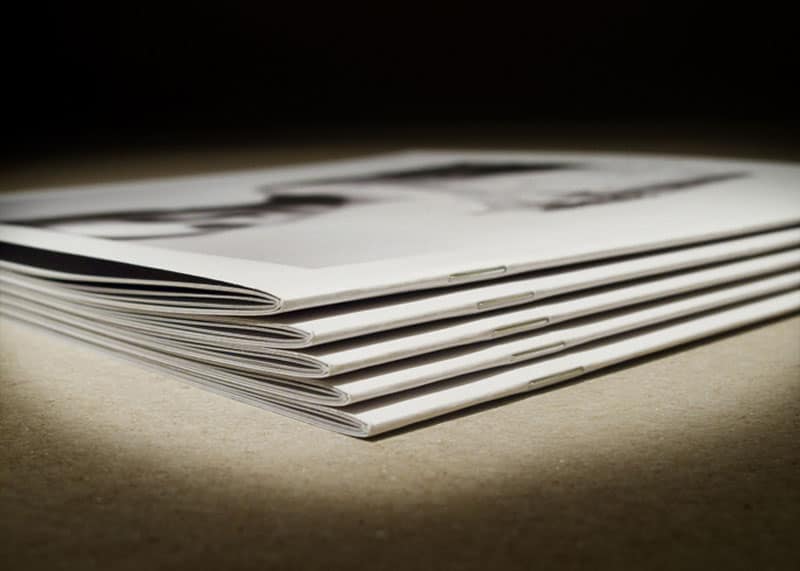Do you ever find yourself needing to have a booklet printed, like for a business brochure or event program? In it, we’ll explore all aspects of the printing process – from defining what exactly ‘booklet printing’ is to exploring the different types of booklets that can be printed depending on your budget.
Whether you are looking for an inexpensive low-quantity print job or higher quality large runs with specialty finishes – there definitely will be something here that suits your needs. We’ll also go into why working with an experienced printer makes all the difference in getting high-quality results while maximizing time and cost efficiency.
So without further ado let’s get started on our exploration into Booklet Printing – A complete guide from printing experts – a Professional Booklet Print House!
What is Booklet Printing and the different types of booklet printing available
Booklet Printing refers to a method of printing that turns large sheets of paper into smaller pages and binds them together to form a booklet.
This type of printing is commonly used in creating brochures, manuals, catalogues, and other publications. There are a variety of different types of booklet printing available, including offset printing, digital printing, and other specialty finishes.
The 2 Main methods of Colour Booklet Printing
Offset Printing
Offset Print Booklets are the most common way to print high volumes of booklets. The advantages of using this method include higher image quality and uniformity across all prints in the batch. It can also be used to create complex designs with multiple colors and finishes.

Digital Printing
Digital Colour Booklet Printing is a more cost-effective and efficient option for printing smaller quantities of booklets. It is often used for short runs, since the set up and running costs are lower than offset printing. This method is best used when you need speed and accuracy, as the turnaround times tend to be faster with digital printing.

How does Booklet Printing differ from Book Printing ?
booklet printing is a type of book printing and it’s basically the same thing: you have large sheets of paper that are printed, then cut down to size and bound together to form a booklet. The difference with a booklet is that it usually has less pages than what most people consider a “book,” but it can still utilize the same methods as book printing.
Book printing is more focused on creating books with large page counts, while booklet printing concentrates on smaller publications and documents that may have fewer pages.
How to choose the right paper for your booklet project
Choosing the right paper for your booklet project is crucial to ensuring that your final product looks professional and high-quality. There are several factors that you should consider, such as the weight and thickness of the paper, its texture, and its color.
The `Big 3′ of Booklet Printing Paper Stocks
Gloss Paper
Gloss paper is one of the most popular types of booklet printing paper due to its vibrant colors and glossy finish. It is a thick, durable paper that can be used for both offset and digital prints.
Matte Paper
Matte paper offers a subtler look than gloss paper, as it has no shine or sheen. This type of paper is ideal for high-resolution images and graphics, as it highlights color more clearly than gloss paper does.
Uncoated Paper
Uncoated paper is the most economical type of booklet printing stock but also has a less vibrant appearance than other types of paper. It still has an excellent texture, however, and can be used for both digital and offset prints.
Ultimately, the right paper should enhance the experience of your readers and showcase your booklet’s content in the best possible light.
How to decide on a binding style for your booklet
When it comes to creating a booklet, one of the most important decisions you’ll make is choosing the right binding style.
The binding you choose not only affects the look and feel of your booklet, but it also impacts its overall durability and functionality.
There are various binding options available, each with its own advantages and disadvantages.
Some common binding styles include saddle stitching, perfect binding, wire-o binding, and spiral binding. To decide which binding style is right for your booklet, you’ll need to consider factors such as the number of pages, your budget, and the purpose of your booklet.
By carefully weighing your options and choosing the right binding, you can ensure that your booklet looks professional and meets your specific needs.
Tips for designing an effective and attractive booklet
Designing a booklet that is both effective and attractive is no easy feat, but with the right tips and tricks, it can be achieved.
One of the most important things to consider is the layout of your booklet. You want to make sure that all the elements are balanced and visually appealing.
Another key factor to keep in mind is the font and color scheme you choose. Use fonts that are easy to read and pair them with colors that complement each other.
It’s also important to incorporate engaging visuals such as high-quality images and graphics to keep your readers interested.
Lastly, make sure the content is organized and easy to follow, including headings, subheadings, and bullet points where necessary. By following these guidelines, your booklet will be both informative and visually stunning. And dont forget to get your Bleed settings right (see below) !

Benefits of using a professional print house for your booklet printing needs
When it comes to printing booklets for your business or organization, it can be tempting to try and save money by doing it yourself or going with a cheap, online printing service.
However, there are many benefits to using a professional print house instead. For starters, a professional print house will have high-quality printing equipment that can produce crisp, clear images and text that will make your booklet look more polished and professional.
They can also offer a wider range of paper, binding, and finishing options to help you create a product that truly stands out.
Additionally, a professional print house can provide expert advice and guidance throughout the printing process, ensuring that your booklet looks exactly how you envisioned it.
In short, while it may seem like a bigger investment upfront, the benefits of using a professional print house for your booklet printing needs far outweigh the costs in the long run.

How are Booklets Bound ?
Booklets can be bound in a variety of ways depending on the size and type of booklet you are printing. The four most common binding types include saddle-stitched, perfect binding, spiral/coil binding, and case binding.
Saddle Stitched Booklets
By Far, Saddle Stitched Booklets are one of the more traditional methods for booklet binding and involves paper being folded in half with a wire or wire staple running through the fold.
This type of multi page document needs to have a page count in multiple pages of 4 (eg 8, 12, 16 etc) to make the binding work. The page count does have restrictions as the Saddle Stitch can only bind about 64 to 68 inner pages, on a light paper… so if your page count exceeds this you may need to choose on of the other methods.

Perfect Bound Books
Perfect binding is a popular option for booklets and other documents that require more pages than the saddle stitch can hold. This method involves glueing pages together at the spine, which is then covered with wrapping paper.
A Perfect Bound Book allows for larger page counts and thicker covers and can be used to create high-quality books, magazines, catalogues or brochures. It is also the most cost-effective option for large page counts, as long runs can be done at a much better price than using other methods.

Spiral/Coil Bound Booklets
Spiral and coil binding is a great way to create booklets that require lots of pages but still have a professional look. A flat spiral or coil wire is fed through holes punched in the booklet’s spine, and it can be opened up completely flat for easy reading.
This type of binding is most popular when you have a larger page count, as it allows for more flexibility with how many pages are included. It also makes it easier to add or remove pages from the booklet.

Case Binding
Case binding is the most expensive and durable form of booklet printing. It involves attaching a stiff cover onto the pages with adhesive, which makes it resistant to damage and gives a very professional look.
This type of binding can also be used for smaller page counts but is usually ideal for higher quality booklets that need to last longer.
Let’s talk a bit more about Digitally Printed Booklets
Digital printing has revolutionized the printing industry, allowing individuals and businesses to create high-quality booklets with ease.
When it comes to producing small booklets, digital printing provides a range of advantages that simply can’t be matched by traditional printing methods.
One major benefit is the speed of production- digital printing allows for faster turnaround times, without sacrificing quality. Additionally, digital printing offers greater flexibility in terms of customization and allows for variable data printing, meaning each booklet can have unique content tailored to the specific recipient.
Overall, digital printing is an ideal choice for anyone looking to produce small booklets with quick turnarounds and customized content.

If you arent sure – organise a Hard Copy Proof !
If you want to know how your printed booklet looks before printing the main run, you should be able to organise an example – or `Hard Copy Proof
You just need to upload your PDF file, and the printer will produce a single copy on the same paper weight and in most cases, the same printing quality as what will be produced on the main run
The only catch here is the type of printing for the main run. Hard Copy Proofs are run digitally – so if your job is Digital on the main run, it will be practically the same. If your Main run is Offset, there will be a little difference as a Digital Booklet uses toner, whereas larger quantities in Offset Printing use Ink.
Clear as Mud ? Hopefully this gives you an idea on at least where to start. But rest assured, and Quality Booklet Printing Supplier should be able to advise the same (and more !)







